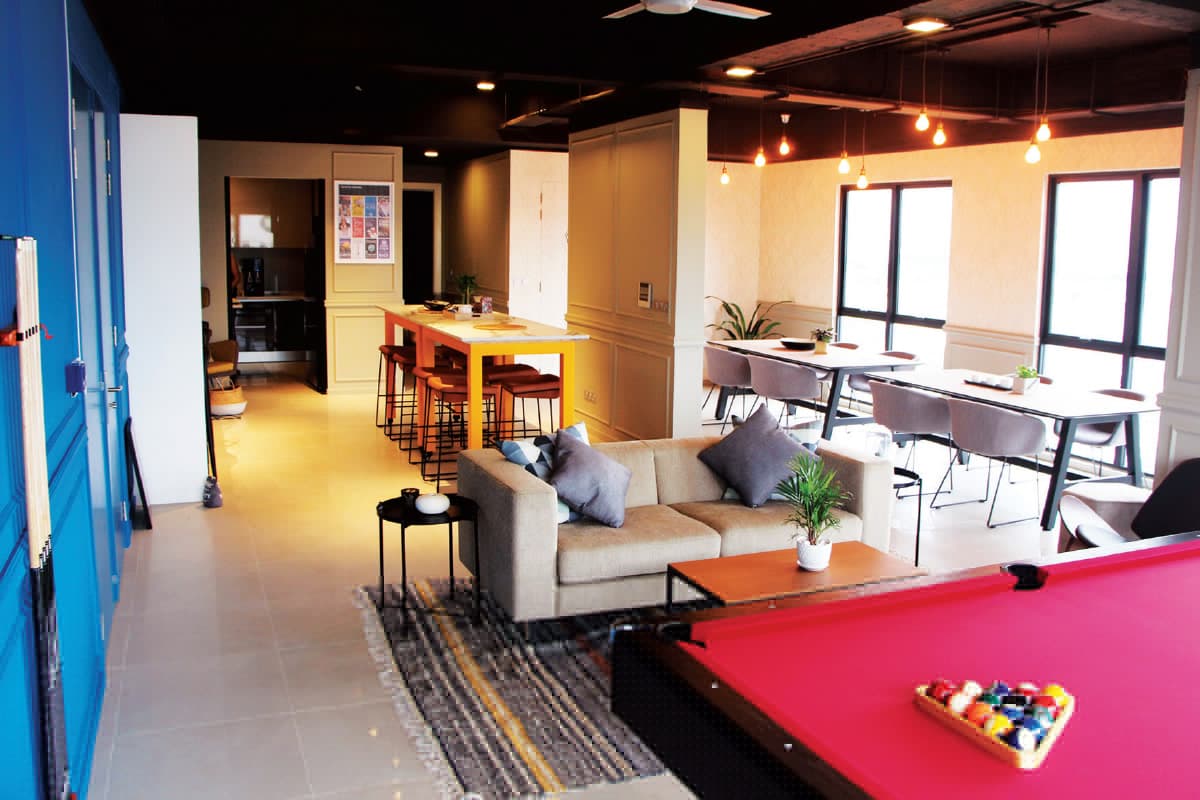
This article first appeared in City & Country, The Edge Malaysia Weekly on October 21, 2020 - October 27, 2020
In Knight Frank’s Commercial Real Estate Investment Sentiment Survey 2020 (CREISS 2020), conducted early this year, co-living emerged as an alternative investment option. The survey participants were representatives in senior management levels across the commercial property industry, namely developers, commercial lenders and fund/real estate investment trust (REIT) managers.
In a report titled “Malaysia Commercial Real Estate Investment Sentiment Survey 2020: Alternative Investment — Co-living”, Knight Frank says the niche asset class, generally integrated or located in close proximity to transit-oriented developments and higher education clusters, is gaining popularity among developers/investors as it typically generates strong recurring income.
Knight Frank Malaysia research and consultancy executive director Judy Ong says co-living is gaining popularity as an alternative investment due to the increasing demand for rental accommodation among singles, students or young professionals.
“They find conventional apartments out of their reach because of high rents, deposits and furnishing costs,” she tells City & Country.
With income growth lagging behind house prices, housing in urban areas and major cities in Malaysia is severely unaffordable. The speed of urbanisation, coupled with the rising cost of living, has led the younger generation of millennials and Gen Z to rethink home ownership, she adds.
Ong notes that developers are unlikely to embark on new property sub-sector developments such as hotels, offices and retail in the short term due to the subdued market conditions. “With the mismatch of supply and demand in these sub-sectors, developers are looking for alternatives that will complement their existing or ongoing developments. Currently, there is a limited supply of co-living developments, which may present an opportunity to fill the gap, subject to site suitability and planning conditions.”
Owing to the oversupply of new offices, investors might explore opportunities to diversify their portfolio to mitigate risks while landlords of some well-located Grade B office buildings might consider repurposing, rehabilitating or redeveloping them into co-living spaces, she says.
Existing co-living spaces include Co-Living @ Damai Residence (formerly known as Co-Coon Co-Living @ Damai Residence) by Tan & Tan Developments Bhd off Jalan Ampang (174 rooms), Komune Living by UOA Group in Bangsar South (648 rooms), Sama Co-Living at D’Latour Residence in Bandar Sunway, and L.ve Space in Taman Tun Dr Ismail.
Notable incoming or planned supply includes Lyf Raja Chulan (scheduled to open in 4Q2020 with 104 units) and AltSpace by Lyfz Co-Living (62 units in HLX Tech and 246 units spread in two other developments in the KL city centre).
Covid-19’s impact on the co-living sector
According to the report, developers who are exploring or planning to develop co-living accommodation are revisiting their plans amid this unprecedented crisis. They are concerned about the financial impact of Covid-19 on the sustainability of their businesses and the marketability of the proposed products amid rising unemployment.
“The pandemic may see developers revisiting the functionality of their co-living spaces in terms of the design and layout, in particular communal areas and shared facilities,” Knight Frank Malaysia capital markets executive director James Buckley tells City & Country.
He notes that until a vaccine is developed, co-living occupancy rates will be impacted, as physical distancing is very difficult when one is sharing a home with others, some of whom may be complete strangers or transient renters.
“However, the drop in occupancy is likely to be short-lived. Once the Covid-19 crisis subsides, we believe there will be growing interest in this sector. With safety and health of residents being high on the priority list of operators, hygiene of communal spaces is of utmost importance at all times.”
Co-living is most in demand in central locations, which are typically more expensive. One of the challenges, Buckley says, is in finding a suitable site or a property with conversion potential in a central location close to public transport that can support the affordable room rates.
A drop in tourist arrivals in Kuala Lumpur due to Covid-19 travel restrictions has put more pressure on smaller hotel owners to enter the long-stay room-rental market. “This could increase the room count of available rooms significantly and add competition in the co-living segment,” he says.
As co-living is still in its infancy stage in Malaysia, the lack of clear planning and building guidelines by the local authorities has caused uncertainty in the development process, he observes.
Despite the Covid-19 crisis and the challenges, the report states that co-living presents an opportunity for key players to secure a first-mover advantage in this largely untapped market in the near future.
However, there is a need for developers or investors to critically evaluate the characteristics of their proposed developments or investments (assets) amid prevailing market sentiments before venturing into this niche segment. The development, refurbishment or repurposing costs, wherever relevant, should be taken into consideration.
Demand for better living conditions with proximity to rail transportation networks, coupled with more innovative methods to house an ever-increasing urban population, may boost the growth of the co-living sector.
Save by subscribing to us for your print and/or digital copy.
P/S: The Edge is also available on Apple's AppStore and Androids' Google Play.

